The room grew even more disproportionately large as my radiant symbols of support — mother, father, sister and family friend — let the door close behind them. I raised my eyebrows innocently, hoping that pulling my lips toward my cheeks would reassure the social worker I had nothing to hide. Now she had me alone with no family to augment or smooth over my answers. We sat across from each other at a table on an elevated platform skirted by individual chairs arranged dejectedly in what must have once been an intentional formation. What could be more comforting than the intimate setting of a stale lecture room? I waited for the questions that would reveal evidence disqualifying me from a coveted spot on the heart-lung transplant list. Our united front fractured, I would surely spoil all that my care team had worked for in the three-day evaluation period.
To my surprise, my antidepressant prescription and weekly therapy sessions did not set off any buzzers. Instead of opening a trap door under my feet, the social worker gave me a routine referral to a transplant psychiatrist. With no questions remaining, she advised that I ruminate on what it would mean to have someone else’s organs inside me. Then she let me leave, victorious, to greet my fellow contestants.
This social worker was concerned with how new organs would affect me emotionally? “Big deal,” I scoffed, and ignored her. “If I ever get a transplant, I’ll have plenty of more pressing issues to distract me from any existential crisis about my insides.” Three months post-transplant, and after dozens of existential crises managed to prevail over pressing issues galore, I’ll admit that we were both right.
I wrote this in the ICU:
I feel invaded by cocky, perfect organs that the rest of my body can’t make sense of. I don’t know how to use them to their full potential, nor do I feel worthy to do so — I’m scared my formerly sick body will infect and tarnish this newfangled heart and lungs.
Though I now feel bonded to my cocky, perfect organs (and my formerly sick body is becoming increasingly cocky itself), I have not fully accepted the loss of my old organs and pre-transplant life.
Nineteen days after my operation, hospitalized with the last stubborn chest tube still draining, I had the opportunity to visit the aptly named Gross Room in Stanford’s pathology lab. Because I donated my original heart and lungs (the ones pulled out of my body before the cocky ones moved in) to the lab, the researchers offered to show them to me when they were done with them. I could even bring a photographer to document the visit.
If you prefer to read this post without the interruption of images of preserved organ remains, please click here.
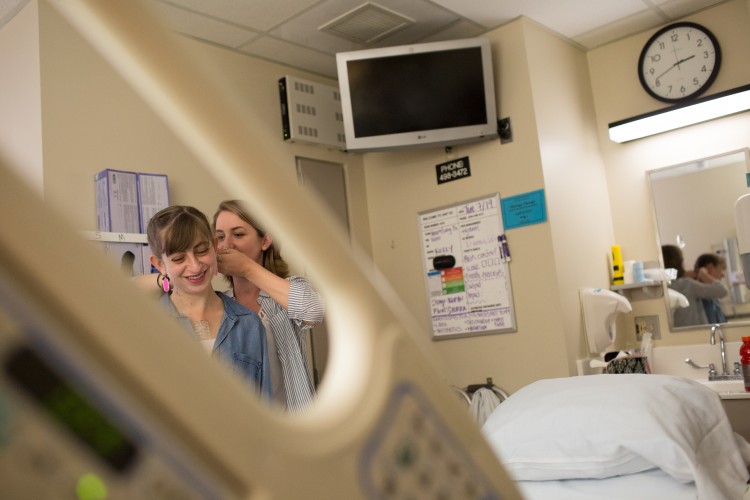
Nervous excitement mixing with prednisone shakiness, I squeezed my sister’s hand for stability as we waited to enter the Gross Room. My family put aside worries that had plagued us throughout the day, determined to honor the hardworking heart and lungs that took me as far as they could, an assertion that would be solidified moments later.
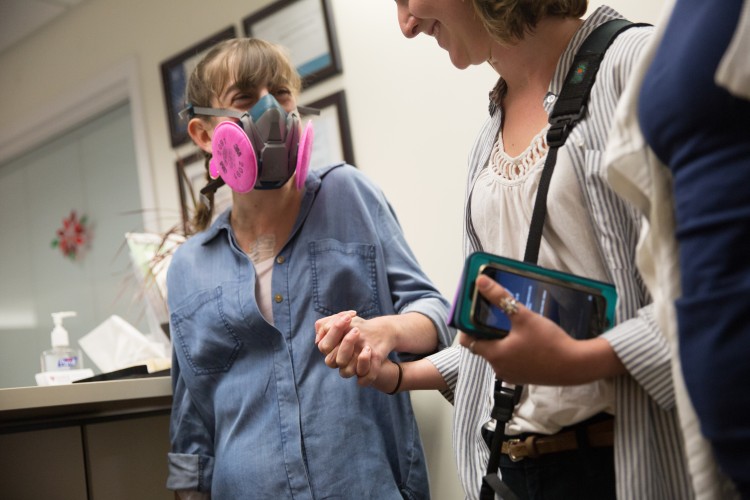
A metal tray covered in green linen separated me from the young pathologist assigned to introduce my newly outside insides. I looked at him expectantly, wondering what he was waiting for. “That cloth isn’t fooling anyone,” I thought. It all seemed a bit overdone. The series of hallways and doors we were guided through had been enough of a grand reveal for me. Judging by the facial expressions the photographer, Nick, captured when the pathologist finally lifted it, the covering had been appropriate.
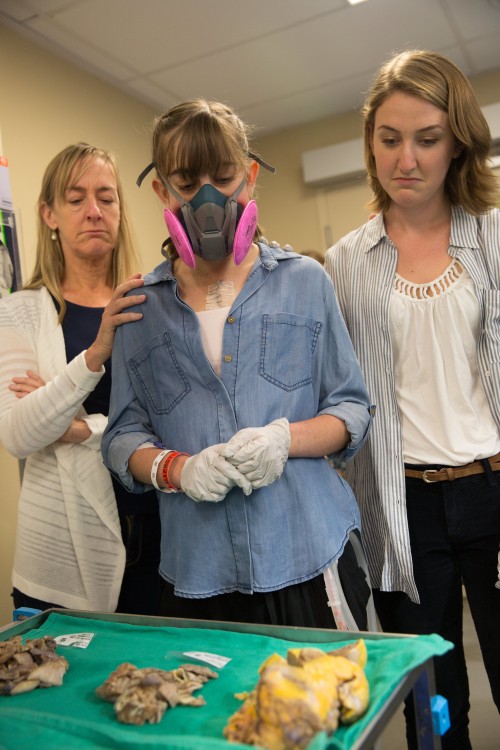
Three tidy piles rested before me. An apparently medically unremarkable layer of bright yellow fat encased what was left of my hardworking heart. Beside that were unequal conglomerates of gray lung tissue. I was pleased to see they were not the disturbing black color I had prepared for. Contrary to the cute analogies in my biology textbooks, they were decidedly dissimilar to sponges. The damage done by 23 years of pulmonary arterial hypertension was refreshingly clear.
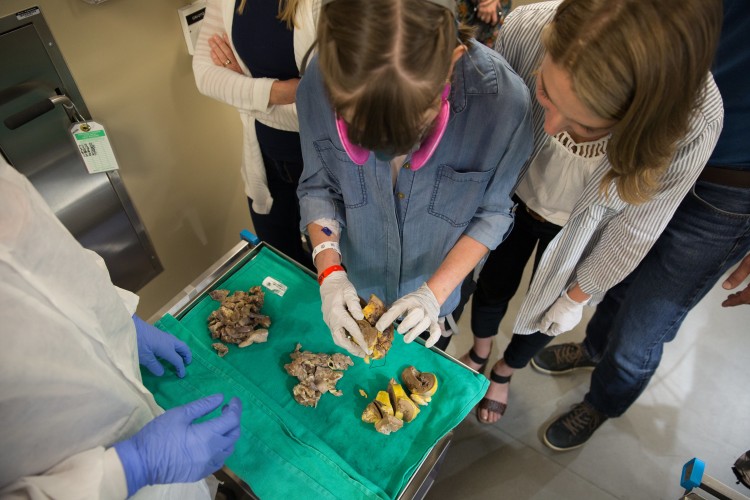
Chunks of abnormally thick heart wall fell back onto the cloth as I tried to piece together the mutilated remains into something resembling a human heart. “You’ve heard the words pulmonary hypertension,” the pathologist correctly presumed. Adrenaline coursing through my veins, I hardly had time to complete a full eye roll before demanding he point out physical evidence of the Senning procedure I had at birth to correct transposition of the great arteries.
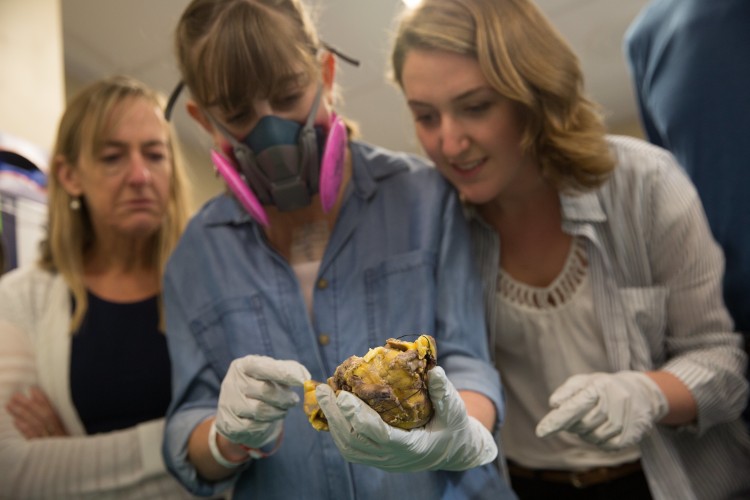
“I’m gonna have a hard time with this, to be honest,” the underprepared pathologist hastily confessed. My mask concealed my disappointment: this wasn’t exactly the psyched-about-transposition expert I’d hoped for. I was forced to pardon his inability to locate the surgical intervention upon learning that the atria (where the intervention was made) were not included in the wreckage I was given to view. That meant that the sections I held — one in each gloved hand as if I were double-fisting grande caffè lattes — constituted only 60 percent of what used to be my tangled heart. My heart was massive. The calcium and fibrin deposits we saw in my butchered lung tissue drove home the message: my cocky, perfect organs had not come a moment too soon.
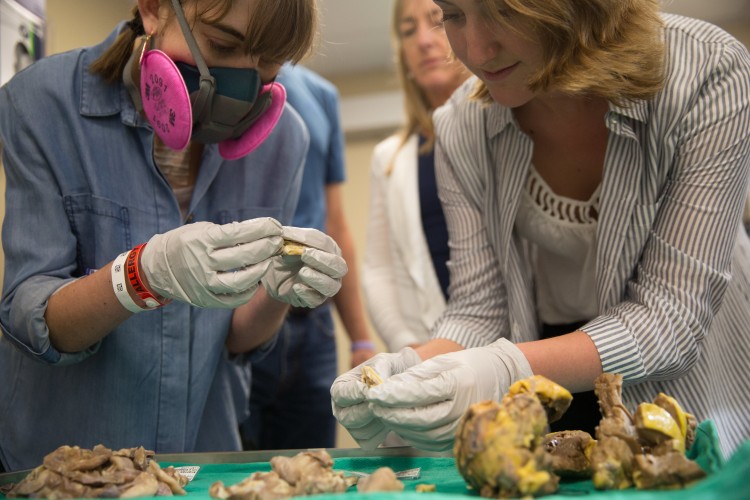
Not content with photographs as my only souvenir of the vital organs I had grown up with — and apparently not content with how bizarre I already sounded — I began a quest to find a mortuary that would cremate the remains from the pathology lab. Sitting at the dining room table in our small apartment, I called every funeral home in a 10-mile radius. I wish I could share the reactions I got, but I only left voicemails, and only one was returned.
My mom and I did our best not to giggle as I signed forms reserved for family members of the deceased. She handed her credit card to the empathetic mortuary worker, ready to pay to have the remains picked up from Stanford and cremated. But after the card was run, a call from the crematorium unearthed the insurmountable obstacle on my quest. I wasn’t able to find out if the acceptance I sought could come in an urn: My hardworking heart and lungs were now medical waste. This classification requires the crematorium to incinerate the remains at temperatures so high I might not even be left with any trace of the metal tray they went in on. Nope, not paying $200 for tray remnants. So we left the mortuary with a receipt from a cancelled charge and a story to tell the proverbial grandkids.
There is a reason you cannot be put on the transplant list without proof of a solid network of caregivers. This is hard work. My loyal support team has dried my tears and wiped my butt — sometimes with the same wad of toilet paper, but always in that order. They have stomached the sights of chest tubes, groin bruises and embalmed organ scraps. Most miraculously of all, my caregivers have always returned to my side after I scream at them to leave it. They joined me on my quest to preserve the organs removed from my body and humor my alarmingly intense desire to commemorate my original heart and lungs. One friend gave me an art piece in place of a crematory vessel — the most beautiful hunk of iron with my birth date and surgery date carved into it; another reminded me of the copies of old chest x-rays hoarded in a keepsake box in my closet. Their encouragement keeps me hopeful for a time when the existential crises about my insides will come further apart.
Said existential crises have been less about having someone else’s heart and lungs inside me, as the social worker suggested, than about having lost my own. Attempting to accept the loss of my organs and pre-transplant life is like hitting a piñata. I’m putting the force of my unresolved angst into each swing, trying to break through to the core of all that has changed. Most of the time the piñata is pulled just out of reach. I made contact the day I visited my organs — some candy flew out. But I wasn’t satisfied so I swung again with the goal of cremation. I don’t think I’ll ever get through and find every bit of acceptance I’m looking for. It is easier to keep swinging knowing that — in the same way they stuffed a colorful cardboard llama for my 9th birthday party— my friends and family will keep filling my life with morsels of hope.
All photographs by Nick Otto: nickotto.net

